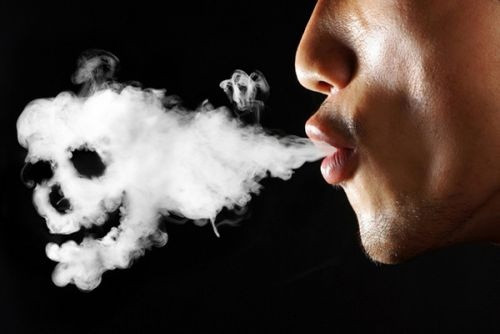Definition
Obsessive-Compulsive Disorder or Obsessive Compulsive Disorder is a mental disorder that causes repeated unwanted thoughts or sensations (obsessions), or the desire to do something repeatedly (compulsions). OCD is a common, chronic, and long-lasting disorder. Some individuals can experience both obsessions and compulsions. These unwanted thought patterns and fears (obsessions) cause individuals to engage in repetitive behavior (compulsions). These obsessions and compulsions can interfere with daily activities and cause significant difficulties. OCD sufferers usually feel powerless to stop the behavior.
Causes
The cause of OCD is still not known for certain, but it is suspected that there is an interaction of various factors that cause this condition to appear. Stress factors are thought to cause symptoms to get worse. Several factors that are thought to play a role in this disease include:
Biological factors
OCD is thought to arise as a result of changes in body chemistry or changes in brain function. It was found that serotonin activity was too high or low in some OCD sufferers. Several researchers have also seen differences in brain structure in OCD sufferers, although how this relates to the OCD symptoms that appear is still unclear.
Genetic factors
OCD may have a genetic component, but the specific gene that causes it has not yet been identified.
Learn from the environment
Obsessive fears and compulsive behaviors can be learned by observing family members or learned slowly.
Risk Factor
OCD appears more often in women than men. Symptoms also appear more often in teenagers or young adults, although sometimes they can appear during childhood.
Other risk factors thought to increase a person's likelihood of experiencing OCD include:
- There is a family history such as parents, siblings, or children who also have OCD
- There are physical differences in certain parts of the brain
- Have depression, anxiety disorders, or tics (repetitive muscle contractions)
- Having experiences that can cause emotional stress such as bullying, abandonment, childbirth or death
- History of physical or sexual abuse as a child
- Neat, conscientious personalities with high personal standards are usually more likely to experience OCD. Individuals who generally worry easily or have a very high level of responsibility for themselves and others are also more likely to have OCD.
Symptoms
Obsessive Thinking
Obsessive thoughts can include certain numbers or colors that can be “good” or “bad”. Other examples of obsessive thinking are worry that oneself or someone else will get injured, full and constant awareness of bodily sensations such as blinking, breathing and others. Feelings of doubt, difficulty dealing with uncertainty, or needing things to be neatly arranged and symmetrical are also part of obsessive thinking.
Compulsive Habits
Compulsive habits are repetitive behaviors that feel necessary to do. These repetitive actions are carried out to reduce anxiety related to an obsessive thought or to avoid something bad happening. However, carrying out this behavior does not provide a feeling of pleasure and only provides a temporary sense of relief from the anxiety experienced. Compulsive habits can consist of performing actions in a certain order each time or repeating a desired number of times. Another example is that sufferers feel the need to count certain things such as footsteps.
Even though the individual may not want to experience the thought or perform the action, they feel unable to stop. If individuals stop, they will feel so uncomfortable and anxious that they start doing it again, like a vicious cycle.
Symptom characteristics
Obsessive thoughts or compulsive habits usually:
- Takes at least 1 hour per day
- Uncontrollable
- Not fun
- Has a certain theme
- Interferes with work, social life, or daily life
There are many types of OCD, but in general the "themes" that frequently appear can be categorized into:
- Checking locks, alarm systems, ovens, lights or thinking you have a medical condition such as pregnancy or schizophrenia
- Contamination or fear of objects that may be dirty, or there is a compulsion to clean up
- Symmetric and order, objects must be aligned according to certain rules
- Ruminations and intrusive thoughts, obsession with certain thoughts, which can take the form of disturbing thoughts
Diagnosis
The doctor can do a physical examination and blood check first to rule out the possibility of other causes of symptoms. The doctor will then conduct a psychological evaluation and ask about the individual's feelings, thoughts and habits. During the interview, the doctor will also ask about the patient's and family's medical history.
The doctor can then use the diagnostic criteria in the Diagnostic and Statistical Manual of Mental Disorders (DSM-5) to make a diagnosis.
Management
OCD cannot be cured but the symptoms can be treated with medication, therapy and a combination of several treatments.
Psychotherapy
Cognitive Behavioral Therapy or Cognitive Behavioral Therapy can help change sufferers' thinking patterns. A type of therapy called Exposure and Response Prevention (EX/RP), the individual will engage in a situation designed to create anxiety or trigger compulsions. The individual will then learn to reduce and stop OCD thoughts or actions.
Relaxation
Meditation and yoga can help reduce OCD symptoms.
Medication
Selective Serotonin Reuptake Inhibitor (SSRI) drugs help many individuals control their obsessions and compulsions. This medication may take up to 2-4 months to start working. If symptoms are still felt, antipsychotic medication can be given.
Neuromodulation
In rare cases where therapy and medication do not help, doctors may recommend devices that can change electrical activity in certain parts of the brain. Deep Brain Stimulation (DBS) is a surgical procedure performed if the patient does not respond to other therapies. DBS involves placing electrodes in certain areas of the brain. These electrodes will then create electrical signals that can help regulate abnormal signals that previously existed.
Transcranial magnetic stimulation (TMS)
TMS is another example of neuromodulation which is a non-invasive device, placed on the head to induce a magnetic field, providing a flow of electromagnetic waves. The magnetic field will then stimulate nerve cells in the affected part of the brain.
Like most other mental disorders, management of OCD is usually tailored to each individual. Medication or psychotherapy is the first therapy option given to patients, and can be combined. In general, EX/RP is an additional therapy option if treatment with SSRI drugs cannot effectively treat OCD symptoms. On the other hand, for people who start therapy with psychotherapy first, SSRIs are the additional treatment of choice.
Complications
Problems caused by OCD can include:
- Spending excessive time engaging in ritualistic behavior
- In individuals whose symptoms manifest as excessive hand washing, health problems such as contact dermatitis may arise
- Difficulty attending work, school, or social activities
- Relationship problems with other people
- Poor quality of life
- Suicidal thoughts and behavior appear
Prevention
There is no definite way to prevent OCD. However, getting treatment as early as possible can prevent OCD from worsening and prevent disruption of daily activities and routines.
When to see a doctor?
OCD thinking is different from worrying excessively about real life problems or liking cleanliness or arranging things in a certain way. If the obsessions and compulsions that appear have affected the quality of life, then you should see a doctor.
If you have friends or family members who are suspected of having OCD, try talking to them and advising them to see a doctor. OCD symptoms are unlikely to get better on their own without proper treatment and support.
Looking for more information about other diseases? Click here!
- dr Hanifa Rahma
Fields, L. (2020). OCD: Types, Symptoms, Causes, Diagnosis, Treatment, and Related Conditions. WebMD.com. Retrieved 4 January 2022, from https://www.webmd.com/mental-health/obsessive-compulsive-disorder
Mayo Clinic Staff. (2020). Obsessive-compulsive disorder (OCD). Retrieved 4 January 2022, from https://www.mayoclinic.org/diseases-conditions/obsessive-compulsive-disorder/symptoms-causes/syc-20354432
National Institute of Mental Health. (2019). Obsessive-Compulsive Disorder. Retrieved 4 January 2022, from https://www.nimh.nih.gov/health/topics/obsessive-compulsive-disorder-ocd
NHS. (2019). Overview – Obsessive Compulsive Disorder (OCD). Retrieved 4 January 2022, from https://www.nhs.uk/mental-health/conditions/obsessive-compulsive-disorder-ocd/overview/



/630212947b934.jpg)


/62d244a608bfb.jpg)





